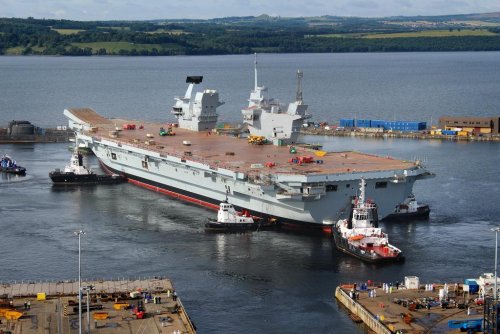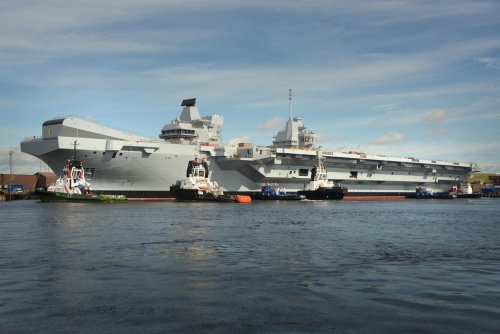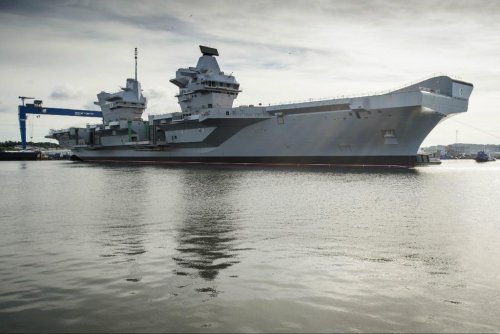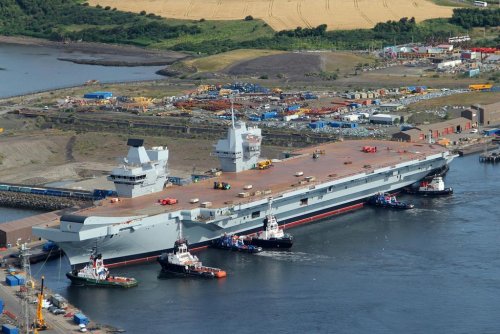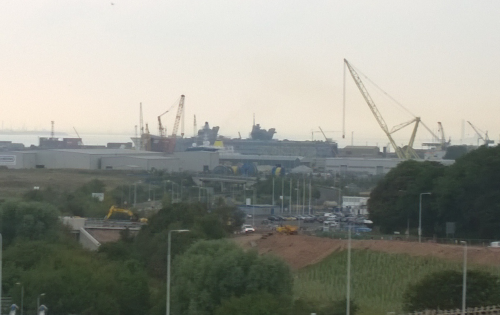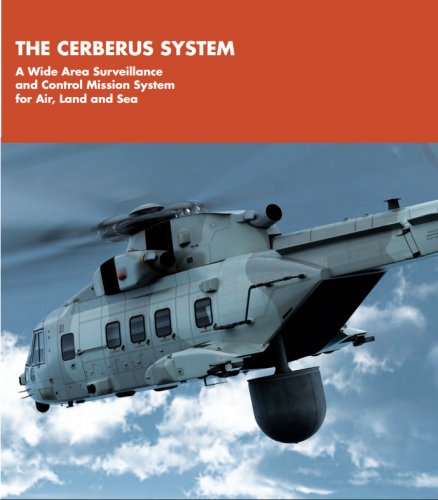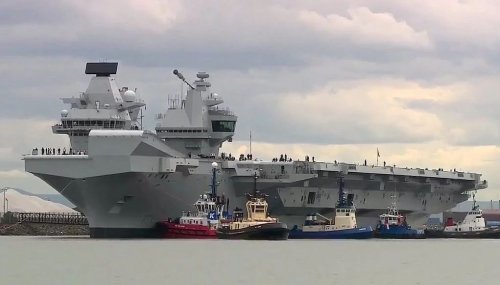I wonder if R09 will be renamed HMS King George VII for the reign of Prince Charles?
You are using an out of date browser. It may not display this or other websites correctly.
You should upgrade or use an alternative browser.
You should upgrade or use an alternative browser.
Queen Elizabeth Class (CVF) development
- Thread starter Triton
- Start date
- Joined
- 16 April 2008
- Messages
- 9,606
- Reaction score
- 14,496
Triton said:I wonder if R09 will be renamed HMS King George VII for the reign of Prince Charles?
Why should it be? It's not really named after Charles but after the previous ships of the same name.
TomS said:Triton said:I wonder if R09 will be renamed HMS King George VII for the reign of Prince Charles?
Why should it be? It's not really named after Charles but after the previous ships of the same name.
I stand corrected. I thought they were named for the current monarch and the heir apparent.
HMS Queen Elizabeth
There have been more than twenty ships named Elizabeth, the list of Battle Honours for which extends from the Armada in 1588 to Guadeloupe in 1810. However, only one ship by the name HMS Queen Elizabeth has served with the Royal Navy – as the lead ship of an important and innovative class of battleships which served with great distinction in both World Wars.
With 15 inch guns as her principal armament, the first HMS Queen Elizabeth was a 33,000 ton battleship. Built in Portsmouth, she was launched in 1913 and was completed the following year. Her service history during the World Wars included the surrender of the German High Seas Fleet during World War I. Despite damage from torpedoes during World War II, she went on to take part in operations in the Indian Ocean before returning home.
HMS Prince of Wales
The Royal Navy's first ship named HMS Prince of Wales was originally a French privateer, commissioned on behalf of the ex-King James, then taken as prize by HMS York in 1693 and brought into service as a Sixth Rate ship, armed with 14 guns.
There have been a further seven Royal Navy ships called Prince of Wales. The most recent a 'King George V' Class battleship, built by Cammell Laird in 1939. The service history of this ship included the Battle of the Denmark Straight during which the German battle ship, The Bismarck, was destroyed.
In 1941 HMS Prince of Wales transported Prime Minister Winston Churchill to Newfoundland where he met with the then President of the United States, Franklin D Roosevelt, to agree the Atlantic Charter.
Source:
- Joined
- 18 March 2008
- Messages
- 3,529
- Reaction score
- 978
The service history of this ship included the Battle of the Denmark Straight during which the German battle ship, The Bismarck, was destroyed.
Who the hell had the nerve to write that? That's terrible.
Agreed, that is a shocker.. HMS Hood was the capital ship not to survive that particular encounter..
& HMS Prince of Wales was, sadly - (& again in company with another WW1 era B-C, HMS Repulse)
like-wise carelessly lost proving that even modern battleships at sea could not in fact defend themselves against
determinedly proficient air attack..
& HMS Prince of Wales was, sadly - (& again in company with another WW1 era B-C, HMS Repulse)
like-wise carelessly lost proving that even modern battleships at sea could not in fact defend themselves against
determinedly proficient air attack..
- Joined
- 2 January 2006
- Messages
- 3,828
- Reaction score
- 5,132
Upppps .. she already has wet feet !!  ... and nobody told us ??? :-\
... and nobody told us ??? :-\
Deino
Deino
- Joined
- 26 May 2011
- Messages
- 2,318
- Reaction score
- 3,472
Abraham Gubler said:The service history of this ship included the Battle of the Denmark Straight during which the German battle ship, The Bismarck, was destroyed.
Who the hell had the nerve to write that? That's terrible.
the same bloke who called that radar "Broomstick".
Chris
- Joined
- 11 March 2006
- Messages
- 8,625
- Reaction score
- 3,805
As there's no author mentioned, I would just use the "contact us" button. Maybe it's better,
if a Britsh citizen does this, because what the hell has a foreigner to care about British history ?
And to be fair, at least as a result of the battle in the Denmark straight, the hunt on the Bismarck
was started with greater efforts and finally Bismarck was sunk ... just about 1000 + seamiles
further south ? And who knows, what the author is doing, when not writing such stuff for
BAe Systems and Thales UK ...
if a Britsh citizen does this, because what the hell has a foreigner to care about British history ?
And to be fair, at least as a result of the battle in the Denmark straight, the hunt on the Bismarck
was started with greater efforts and finally Bismarck was sunk ... just about 1000 + seamiles
further south ? And who knows, what the author is doing, when not writing such stuff for
BAe Systems and Thales UK ...
- Joined
- 2 January 2006
- Messages
- 3,828
- Reaction score
- 5,132
Mat Parry
ACCESS: Secret
- Joined
- 25 January 2011
- Messages
- 416
- Reaction score
- 27
Looking at Deino's pictures this came to mind
View: http://m.youtube.com/watch?v=-D99n9f3vU4
I'm referring to the ship of course,
I'm referring to the ship of course,
Last edited by a moderator:
- Joined
- 22 April 2012
- Messages
- 2,258
- Reaction score
- 2,307
Unfortunately....use/uselessness is subjective. I can think of at least one agenda for which is it perfectly useful.
- Joined
- 3 June 2011
- Messages
- 18,335
- Reaction score
- 12,236
JFC Fuller said:Unfortunately....use/uselessness is subjective. I can think of at least one agenda for which is it perfectly useful.
"War" comes to mind.
- Joined
- 18 March 2008
- Messages
- 3,529
- Reaction score
- 978
CJGibson said:the same bloke who called that radar "Broomstick".
And he/she also wrote that the 4.5" gun was to be called the 114mm gun after metricisation even though the actual calibre is 4.45" making it a 113mm gun.
PS Back on topic: congratulations to the Brits for getting a very nice carrier in the water! Can't wait until she visits downunder.
- Joined
- 9 October 2009
- Messages
- 21,973
- Reaction score
- 13,626
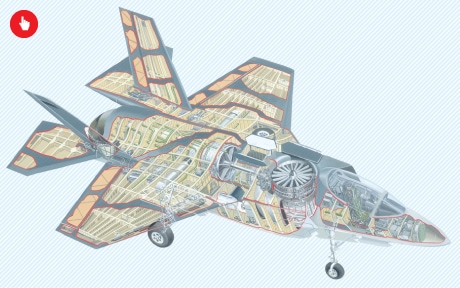
Boost for defence industry as Navy gets second aircraft carrier
Prime Minister David Cameron uses NATO summit to confirm Royal Navy will receive second in class of new generation of aircraft carrer
The second of the new Queen Elizabeth-class aircraft carriers will go into service with the Royal Navy, ending fears the 65,000 ton vessel would be mothballed or even sold as soon as it was completed to save money.
Prime Minister David Cameron announced at the NATO summit in Wales that the vessel – to be named HMS Prince of Wales – currently being constructed in Rosyth, Scotland, would join Britain’s fleet.
Hollow words, methinks.
CJGibson said:the same bloke who called that radar "Broomstick".
It does have a shared heritage with the original Broomstick (Britification of a Signaal/Thales NL radar), so the nickname woudn't be totally inappropriate ;D
- Joined
- 26 May 2011
- Messages
- 2,318
- Reaction score
- 3,472
Aye, perhaps, but you might want to read the entire story in "Rebuilding the Royal Navy" which I was paraphrasing.
As an aside, I found a brand spanking new paperback copy of Brown and Moore's "Rebuilding the Royal Navy" in Waterstones in Aberdeen the other day. Nice to see it's been re-issued as a paperback, for twenty quid.
Chris
As an aside, I found a brand spanking new paperback copy of Brown and Moore's "Rebuilding the Royal Navy" in Waterstones in Aberdeen the other day. Nice to see it's been re-issued as a paperback, for twenty quid.
Chris
shedofdread
ACCESS: Top Secret
- Joined
- 14 November 2009
- Messages
- 593
- Reaction score
- 400
It would appear the second Queen Elizabeth class carrier will enter service after all...
http://www.flightglobal.com/news/articles/uk39s-second-aircraft-carrier-will-enter-service-403407/?cmpid=NLC|FGFG|FGFDN-2014-0910-GLOBnews&sfid=70120000000taAm
http://www.flightglobal.com/news/articles/uk39s-second-aircraft-carrier-will-enter-service-403407/?cmpid=NLC|FGFG|FGFDN-2014-0910-GLOBnews&sfid=70120000000taAm
UK Prime Minister David Cameron has announced the Ministry of Defence will bring its second aircraft carrier, HMS Prince of Wales, into service – a reversal of a decision made in 2010.
In the Strategic Defence and Security Review (SDSR) released in 2010 the government said it would mothball the second carrier, but this decision has been reversed in an effort to “project power globally”, Cameron said at the 2014 NATO summit in Newport, Wales.
A decision on the future of the second carrier was previously not expected until the next SDSR – expected around May 2015 – was released.
“The second carrier will be brought into service to ensure that we always have one carrier available 100% of the time,” Cameron says.
Cameron says the UK needs to be “able to protect and project” – a capability the carrier will provide.
The first vessel, HMSQueen Elizabeth, was officially named in July at Rosyth dockyard near Edinburgh, Scotland.
The UK will operate its future fleet of Lockheed Martin F-35B Joint Strike Fighters and AgustaWestland Merlin HM2 helicopters from the carrier, which can carry some 40 aircraft.
The British Army’s Boeing/AgustaWestland Apache AH1 attack helicopter, the Royal Air Force’s Boeing CH-47 Chinook and the Royal Navy’s Merlin HC4 amphibious support helicopters are also expected to be operated from the vessels.
- Joined
- 22 April 2012
- Messages
- 2,258
- Reaction score
- 2,307
Not really news, it has been pretty clear for some time that both ships would be operated in order to keep one flat deck available at any time as the RN has been doing since 2010.
shedofdread
ACCESS: Top Secret
- Joined
- 14 November 2009
- Messages
- 593
- Reaction score
- 400
JFC Fuller said:Not really news, it has been pretty clear for some time that both ships would be operated in order to keep one flat deck available at any time as the RN has been doing since 2010.
Indeed, but it's good to have it confirmed
- Joined
- 2 January 2006
- Messages
- 659
- Reaction score
- 283
JFC Fuller said:Not really news, it has been pretty clear for some time that both ships would be operated in order to keep one flat deck available at any time as the RN has been doing since 2010.
Not really, they have implied they would like both carriers operational, but as it would breach the 2010 SDSR they had postponned the decision till the next SDSR in 2015. The NATO conference in this time of crisis gave them an ideal excuse to resolve the issue before the SDSR, and knocking off a potential election issue next year.
- Joined
- 26 May 2011
- Messages
- 2,318
- Reaction score
- 3,472
- Joined
- 2 January 2006
- Messages
- 659
- Reaction score
- 283
The first three lower blocks that form the first half of HMS Prince of Wales are now in position in the dry dock, so final assembly has begun. The remaining upper hull sections for CB02 are due up from Birkenhead at the start of next month, so we should see the PWLS start to take shape before the end of the year, the next major section is due up next spring, so we may see the 2nd hull assembled by the end of 2015 !
- Joined
- 9 October 2009
- Messages
- 21,973
- Reaction score
- 13,626

Can anyone tell me what this means?
The annual National Audit ritual of ‘let’s kick the MoD in the balls’ commonly called the Major Project Report was published today. Click here to read. As usual, lots of interesti…
 www.thinkdefence.co.uk
www.thinkdefence.co.uk
- Joined
- 21 January 2015
- Messages
- 12,150
- Reaction score
- 16,351
Merlin Helicopters To Fly From Queen Elizabeth in March 2017

 www.defensenews.com
www.defensenews.com

Merlin Helicopters To Fly From Queen Elizabeth in March 2017
The Merlins are expected to start low risk, simple flights from the Queen Elizabeth next March.
- Joined
- 9 October 2009
- Messages
- 21,973
- Reaction score
- 13,626
Janes | Latest defence and security news
Janes | The latest defence and security news from Janes - the trusted source for defence intelligence
www.janes.com
Hmmm.
Interesting related article here -
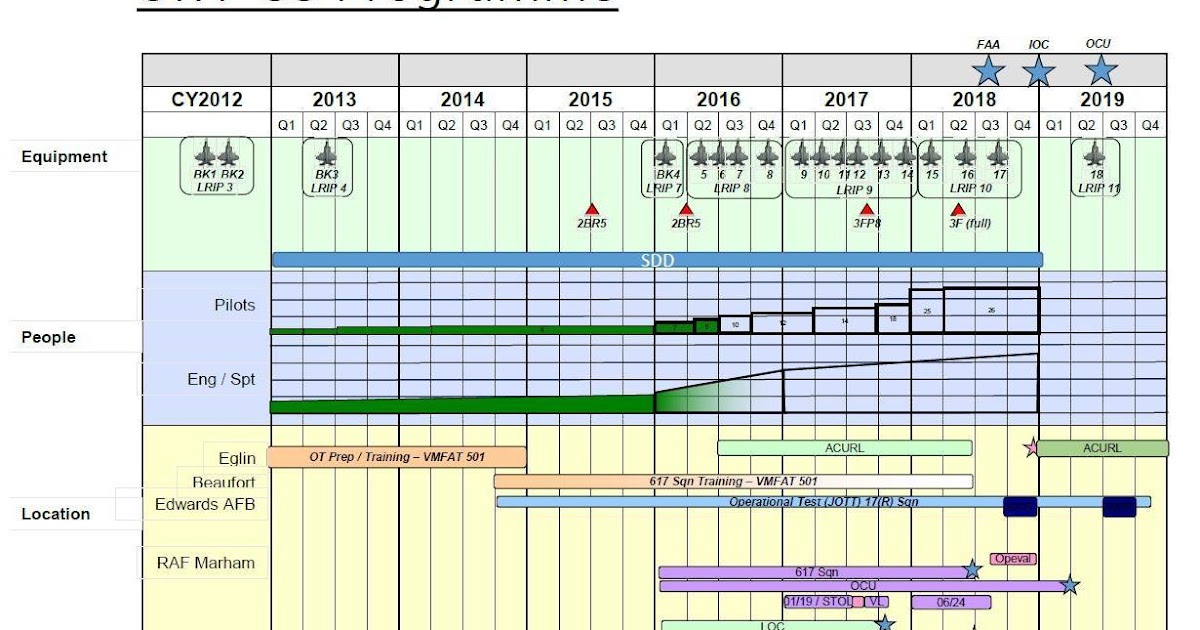
 ukarmedforcescommentary.blogspot.co.uk
ukarmedforcescommentary.blogspot.co.uk
I wonder if we will soon be able to fit all of the UK's operational frontline combat aircraft into one carrier :

F-35 and Carrier Enabled Power Projection update
The Royal Navy and Royal Air Force exploited RIAT 2016 to deliver a couple of interesting about the F-35 and the fabled Carrier Enabled Pow...
I wonder if we will soon be able to fit all of the UK's operational frontline combat aircraft into one carrier :
- Joined
- 9 October 2009
- Messages
- 21,973
- Reaction score
- 13,626
Grey Havoc said:Warship's launch is delayed amid fears over rising costs (The Times, registration may be required.)
The launch of Britain’s new aircraft carrier has been delayed by three months because of technical problems that have yet to be fixed.
The multibillion-pound programme to have HMS Queen Elizabeth and a squadron of F-35 jets operating at sea by 2021 is also under threat, the National Audit Office (NAO) says in a report being published today. A second carrier, HMS Prince of Wales, is due to be operational by 2026.
The government’s spending watchdog says that the overall cost of the two ships — £6.2 billion, almost double the original estimate — could rise by up to £124 million.
- Joined
- 18 March 2008
- Messages
- 3,529
- Reaction score
- 978
JFC Fuller said:CVF as built was the Delta design, more or less a halfway point between the very capable/expensive Alpha design and the much less capable/cheaper Beta and Charlie designs.
External pods? Very noisy and very vulnerable. AFAIK there are no MILSPEC azimuthal (or fixed) thruster pods available or likely to be.
- Joined
- 16 April 2008
- Messages
- 9,606
- Reaction score
- 14,496
Abraham Gubler said:JFC Fuller said:CVF as built was the Delta design, more or less a halfway point between the very capable/expensive Alpha design and the much less capable/cheaper Beta and Charlie designs.
External pods? Very noisy and very vulnerable. AFAIK there are no MILSPEC azimuthal (or fixed) thruster pods available or likely to be.
There are podded systems in some amphibious ships (the French Mistake and the Australian Canberra). But yes, it's pretty unproven technology with a bunch of potential issues like shock sensitivity and noise transmission. That said,pods were incredibly popular for a while, until they started to get operation experience with pods in large cruise ships. They became a lot less popular in military concepts as the reliability issues started.
- Joined
- 18 March 2008
- Messages
- 3,529
- Reaction score
- 978
The Spanish Juan Carlos LHD (aka Canberra) is military to the waterline and then civil to the keel. Both it and the Mistral designs are built to commercial standards and the avipods are COTS. Neither ship meets basic MILSPEC for noise or survivability.
Volkodav
I really should change my personal text
- Joined
- 28 March 2014
- Messages
- 746
- Reaction score
- 1,270
Abraham Gubler said:The Spanish Juan Carlos LHD (aka Canberra) is military to the waterline and then civil to the keel. Both it and the Mistral designs are built to commercial standards and the avipods are COTS. Neither ship meets basic MILSPEC for noise or survivability.
Interestingly rumour has it Canberra had to curtail Tiger certification trials and return to port after a major engineering casualty, indicating the RAN is not doing too well with their COTS toys to date. Just because something is cheaper upfront doesn't necessarily mean it will be cheaper through life, especially if it keeps breaking and/or wears out quicker.
We'll find out soon if this June 5 prediction was accurate.
"Coinciding with the tides and the booking of various tugs, it’s estimated that HMS Queen Elizabeth will sail between the 21st and 24th of this month."
https://ukdefencejournal.org.uk/hms-queen-elizabeth-sail-trials-later-month-date-revealed/
"Coinciding with the tides and the booking of various tugs, it’s estimated that HMS Queen Elizabeth will sail between the 21st and 24th of this month."
https://ukdefencejournal.org.uk/hms-queen-elizabeth-sail-trials-later-month-date-revealed/
- Joined
- 19 July 2016
- Messages
- 4,279
- Reaction score
- 3,463
Does anyone have access to a relativistic study of the abilities of the Crowsnest radar system to be fitted to the Merlin MK 2 helicopters? I would have thought a better solution would have been a fixed wing carrier but that would have been canned when the government decided they would be moronic about the whole proper carrier role.
- Joined
- 6 September 2006
- Messages
- 4,834
- Reaction score
- 9,457
I can't say for certain on performance, but a few nations have helicopter-based AEW systems aboard their carriers. The competing Lockheed system with the Elta EL/M 2052 AESA radar would have been better but the main point was to achieve AEW at the lowest cost (perhaps the most consistent theme in land and sea-based British AEW programmes) and the existing Thales Cerebus is still very good. It was thought far cheaper to just take the kits out of the Sea Kings and put them into Merlins. The Crowsnest system should be better than the previous Sea King ASaC.7 with some processing improvements and the operators might suffer less from noise and vibration fatigue.
FOAEW's baseline was a Merlin conversion with existing Cerebus kits, the other competitors were the E-2, V-22 and Aerostat. The succeeding MASC was also a Merlin vs V-22 duel but still not ruling out a fixed-wing solution, but when MASC became Crowsnest in 2010 the fixed-wing option disappeared. It's clear that since the CTOL carrier was never a popular choice or a cost-effective conversion possibility, it realistically ruled out any fixed-wing type and since 2001 a Merlin conversion has always been the frontrunner.
I think the main gripe wasn't the selection of using existing kit, but rather that the ten HMA.1s in storage hadn't been converted instead to avoid reducing the anti-submarine Merlin fleet.
Even had the CTOL carrier gone ahead and a quartet of E-2C Hawkeye 200 or Ds been ordered, at around $180 million each and with all the non-standard logistical items it would have worked out very expensive. Also where do you get your twin-engine pilots from unless your using RAF crews? Only operating one carrier at a time in rotation removed the justification for the MOD and Treasury to spend large amounts when they can use as much existing kit as possible to reduce the equipment costs. There is persistent background noise about perhaps buying Ospreys for the carriers for COD etc., but I think that too is highly unlikely unless the RAF finds a need for some and a future Osprey AEW conversion is unlikely given the expense of the Crowsnest conversions and their relatively new status. I think the days of the Navy operating bespoke aircraft the RAF don't have are long gone.
FOAEW's baseline was a Merlin conversion with existing Cerebus kits, the other competitors were the E-2, V-22 and Aerostat. The succeeding MASC was also a Merlin vs V-22 duel but still not ruling out a fixed-wing solution, but when MASC became Crowsnest in 2010 the fixed-wing option disappeared. It's clear that since the CTOL carrier was never a popular choice or a cost-effective conversion possibility, it realistically ruled out any fixed-wing type and since 2001 a Merlin conversion has always been the frontrunner.
I think the main gripe wasn't the selection of using existing kit, but rather that the ten HMA.1s in storage hadn't been converted instead to avoid reducing the anti-submarine Merlin fleet.
Even had the CTOL carrier gone ahead and a quartet of E-2C Hawkeye 200 or Ds been ordered, at around $180 million each and with all the non-standard logistical items it would have worked out very expensive. Also where do you get your twin-engine pilots from unless your using RAF crews? Only operating one carrier at a time in rotation removed the justification for the MOD and Treasury to spend large amounts when they can use as much existing kit as possible to reduce the equipment costs. There is persistent background noise about perhaps buying Ospreys for the carriers for COD etc., but I think that too is highly unlikely unless the RAF finds a need for some and a future Osprey AEW conversion is unlikely given the expense of the Crowsnest conversions and their relatively new status. I think the days of the Navy operating bespoke aircraft the RAF don't have are long gone.
The aardvark??
- Joined
- 9 October 2009
- Messages
- 21,973
- Reaction score
- 13,626
HMS Queen Elizabeth squeezes out of dockyard for the first time - and Russian spies are watching
Britain’s largest ever warship has squeezed out of its dockyard, as the ship heads out on sea trials.
Apparently waiting till around midnight before passing under the Forth bridges but already out of the dockyard basin.
https://ukdefencejournal.org.uk/hms-queen-elizabeth-heads-sea-trials/
https://ukdefencejournal.org.uk/hms-queen-elizabeth-heads-sea-trials/
Attachments
Finally some videos showing up. The 2nd one indicates they may not be waiting till midnight to pass under the bridges.
View: https://www.youtube.com/watch?v=ohr25oW_jBY
View: https://www.youtube.com/watch?v=dtLFoodjWxg
Similar threads
-
Royal Navy Future Surface Combatant (FSC) - until late 2004
- Started by Triton
- Replies: 13
-
Royal Navy Type 45 ("D" Class) Destroyer Daring Class concepts
- Started by Triton
- Replies: 20
-
Non-monohull forms (SWATH, catamarans, tri-marans)
- Started by Triton
- Replies: 17
-
-
Air Defense Ship (ADS)/Indigenous Aircraft Carrier (IAC)/Vikrant-class Carrier
- Started by TinWing
- Replies: 96

